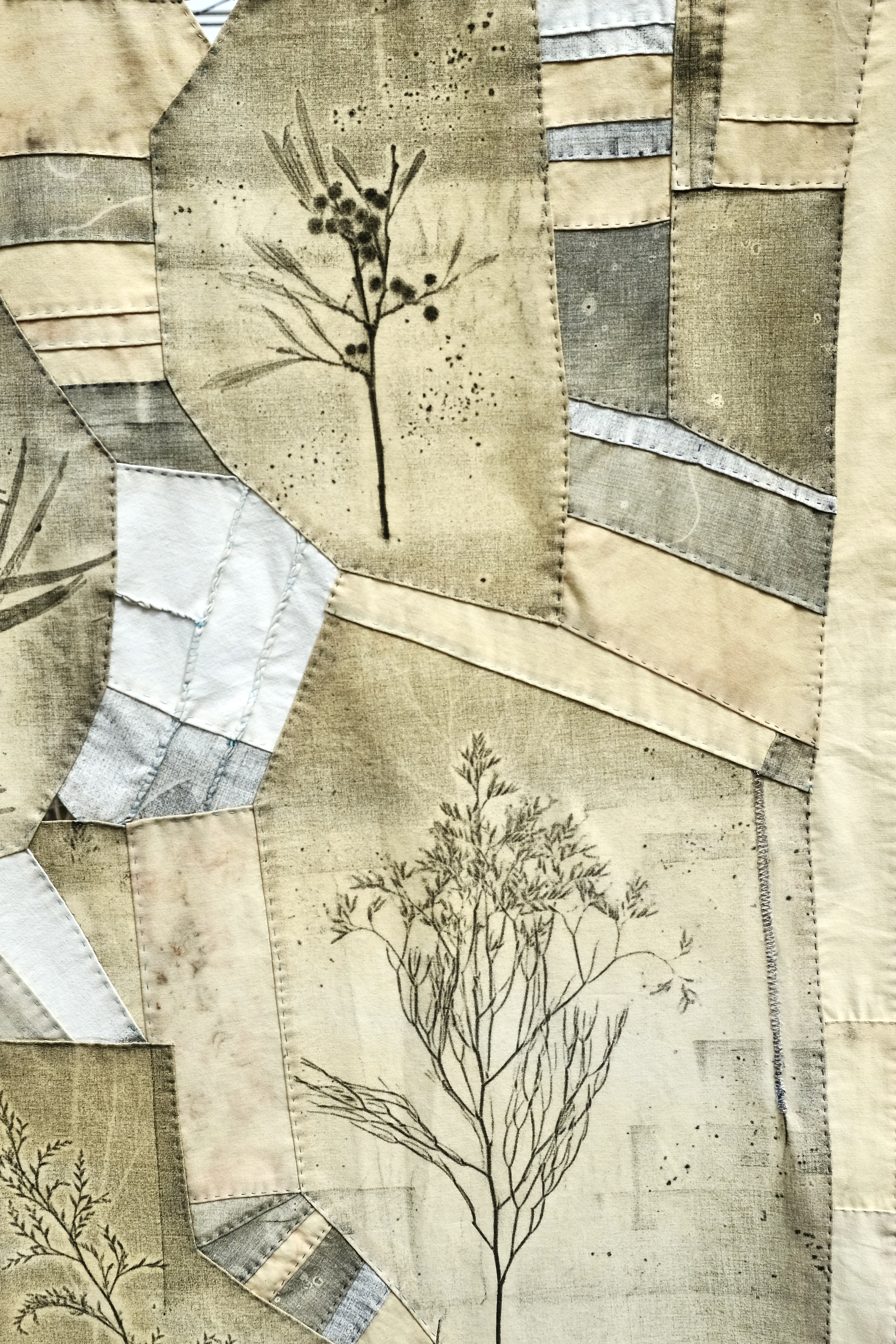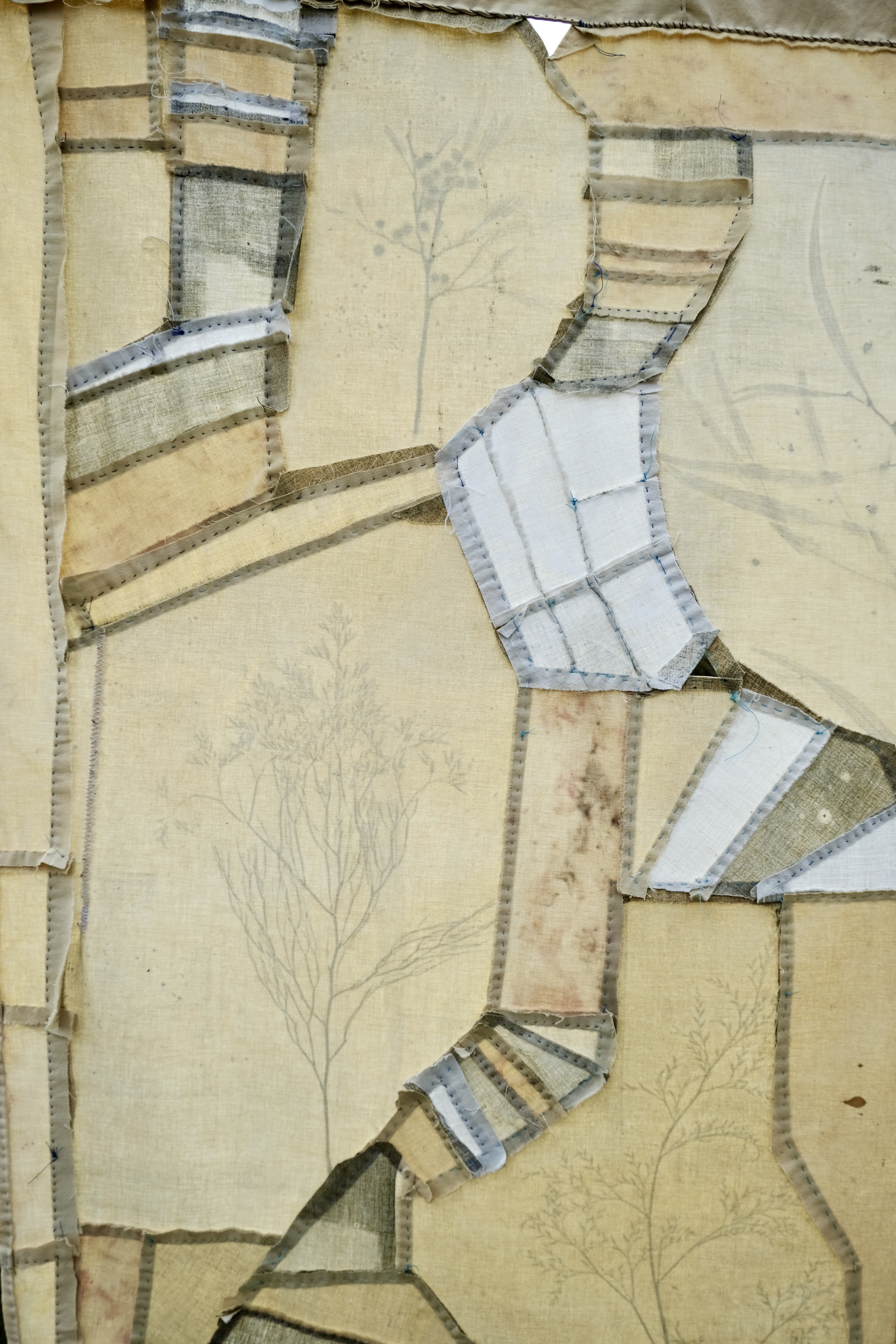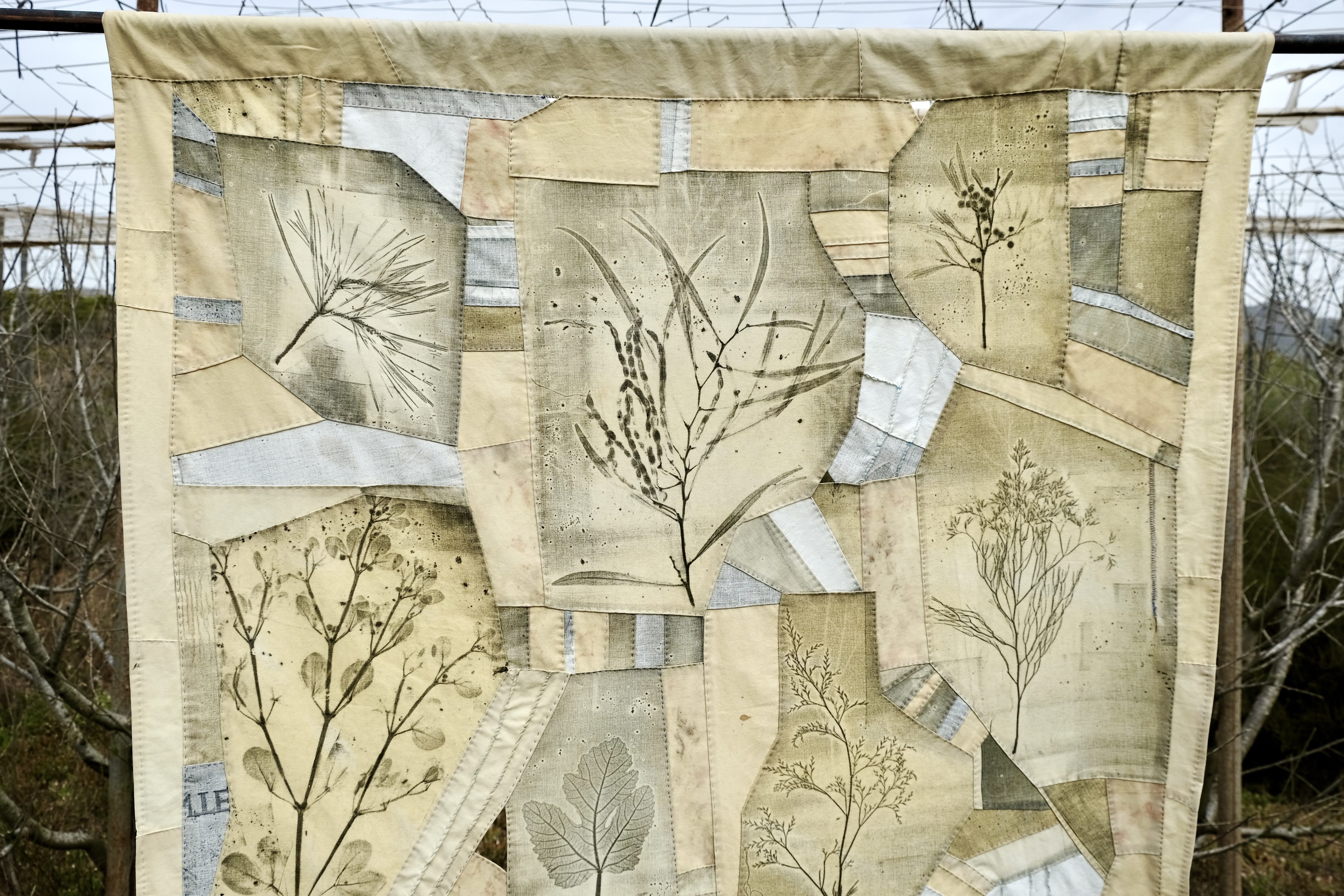
Naturalization
2022
Oil based ink on repurposed cotton and linen fabric
108 cm x 106 cm




In the Almeria province of southern Spain lies an immense spread of white plastic greenhouses, nestled between the Mediterranean sea and the base of the Sierra Nevada mountains. The “Mar de plastico” fills 31,000 hectares (76,600 acres) of semi-arid landscape and is so large it is visible from space. The myriad patchwork of structures have a quilt-like effect when seen from the air. Nicknamed the “salad bowl of Europe” the greenhouses grow tomatoes, peppers, watermelon, etc. for the whole of Europe. The produce is picked predominantly by undocumented migrants from Northern Africa, who suffer from unfair and unsafe working and living conditions.
While having a deep interest in ecology, social justice, migration, and textiles, I felt compelled to create a triangulation between the greenhouses, the migrant worker population, and the natural ecology of the area. All elements have “naturalized” to some extent in this area, adjusting to this unnatural “ecosystem” of industrialized agriculture. According to Merriam-Webster Dictionary, Naturalization is defined as “the process of becoming or the state of being established in the wild so that growth and reproduction is possible without human intervention” as well as “the course of action undertaken to become a citizen of a country other than the country where one was born”.
While the greenhouses must be individually built by humans, one could argue that they are creating their own ecosystem when inmasse: they have actually changed the weather in the area over the last 30 years with a reduction of .25% due to sunlight reflected back by the light colored plastic roofs. Scientists warn this could actually change weather patterns enough to reduce rainfall. The aggressive expansion of the greenhouses mimics the naturalization of non-native invasive plants, eliminating the opportunity for a natural and sustainable bioregion.
An organic version of the naturalization process of migrant greenhouse workers could be considered as starting with their dangerous voyage across the water in overflowing dinghies in the Atlantic and Mediterranean sea. The desire for many Africans to move to Europe is strong enough to risk their life making the journey. Escaping armed conflict and poverty, about 42,000 refugees arrived in Spain 2021, with more than 4,000 individuals perishing while attempting to cross, including over 200 children. Once embarked, many undocumented migrants work in the
greenhouses where they are victims of unregulated, “slave-like” conditions: below minimum wage pay, regular wage theft and unpaid overtime, exposure to pesticides, extreme heat and unsanitary conditions. Informal shantytowns have developed around these farms, creating worker housing made from dumped rubbish and foraged greenhouse plastic, often lacking basic sanitation, water and electricity.
From an ecological perspective, the greenhouses are an exploitation of the region’s already fragile natural resources. Displacing the native ecosystem with thousands of acres of plastic and industrialized agriculture has led to habitat loss for plants, animals and insects, water scarcity and salinization due to aggressive depletion of natural aquifers, fertilizer and pesticide contamination, and increased desertification in a bioregion already already struggling with climate change.
This project features monoprint impression studies of plants that grow in the region and that would have likely filled the area prior to the spread of greenhouses. These include regional natives: Ficus carica, Limonium insigne, Pinus halepensis, Zygophyllum fabago, as well Acacia cyanophylla, which is a naturalized non-native, originally from Australia. Some of the fabric I hand dyed using the Delosperma species that is a pervasive groundcover in the area, native to South Africa.
The layout of the fabric pieces mimics the patterns created by the Almeria greenhouses when seen from the air. Over time the Almeria greenhouses have been built with limited pre-planning and guided by a priority for efficiency, creating haphazard layouts fitting between existing structures and roads, frequently not using 45 degree angles. While constructing the quilt, I used as much scrap fabric as possible, categorizing shapes in a semblance of order that made sense spatially and architecturally as I added fabric around each larger printed panel, as if I were building the greenhouses without the luxury of a bird’s eye view.
I included limited watermark fabric pieces that can be seen when light passes through, symbolic of the underpaid labor of the workers. Hand sewn with various shades of blue thread, I honor the migrants and their dangerous water crossing over the Mediterranean sea in hopes of living out better lives in Europe.
Almeria, June 2022
© 2024 Elizabeth Robinson